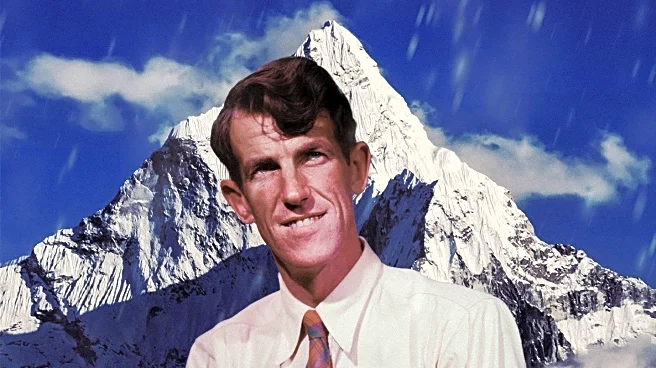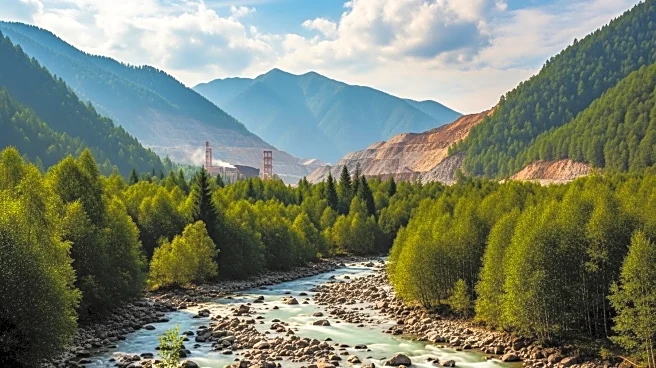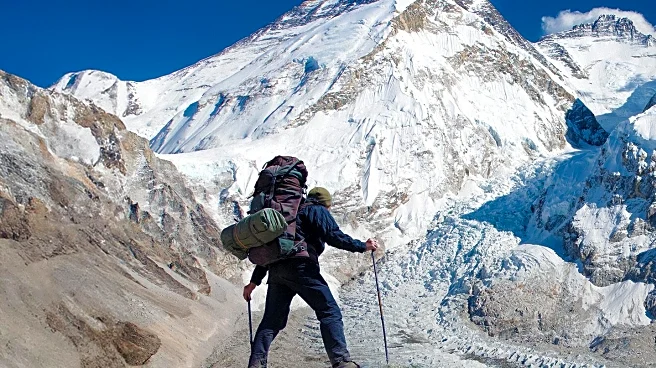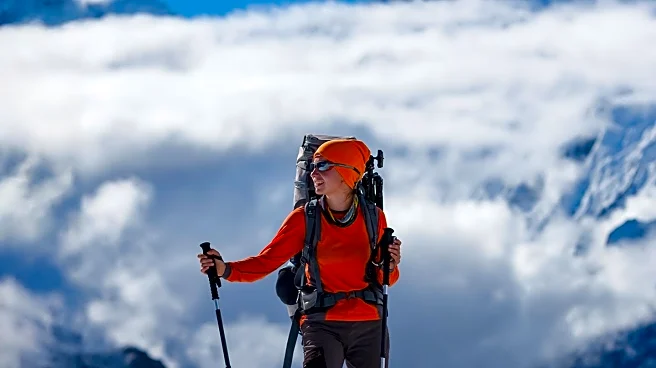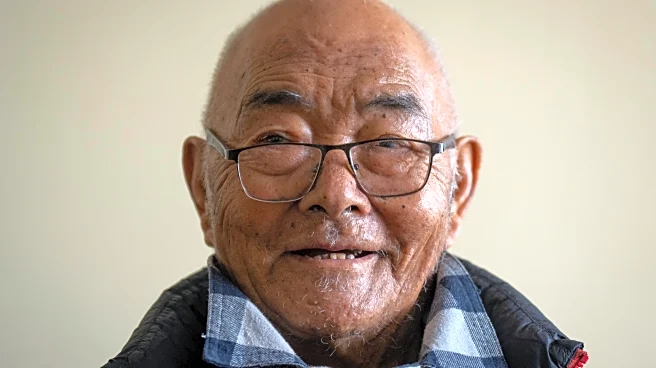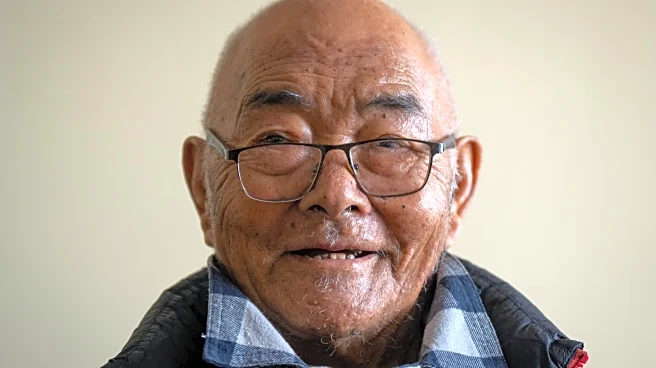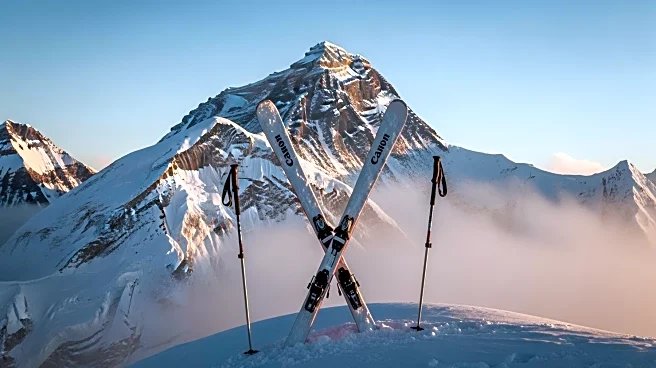What's Happening?
Kanchha Sherpa, the last surviving member of the historic 1953 Mount Everest expedition, has died at the age of 92 in Kathmandu, Nepal. Sherpa was part of the team that assisted Edmund Hillary and Tenzing
Norgay in their successful summit of Mount Everest. Despite his involvement, Sherpa never reached the summit himself, citing his wife's concerns about the dangers. He was a respected figure in the mountaineering community and continued to participate in religious treks even after retirement. Sherpa voiced concerns about the overcrowding and pollution on Mount Everest, advocating for a reduction in climber numbers to preserve the mountain's sanctity.
Why It's Important?
Sherpa's death marks the end of a significant chapter in mountaineering history, as he was the last living member of the team that first conquered Mount Everest. His concerns about the environmental and cultural impact of tourism on Everest are crucial for ongoing discussions about sustainable practices in adventure tourism. Sherpa's legacy highlights the need for balancing economic interests with the preservation of natural and cultural heritage, which is vital for policymakers and environmental advocates.
What's Next?
Sherpa's passing may prompt the mountaineering community to revisit his concerns about the state of Mount Everest. Discussions on implementing stricter regulations to protect the mountain's environment and cultural significance could gain momentum. Sherpa's funeral rites are planned for Monday, providing an opportunity for reflection on his contributions and the future of sustainable tourism on Everest.
Beyond the Headlines
Sherpa's life story brings attention to the ethical dimensions of adventure tourism, particularly the impact on indigenous communities and their sacred sites. His advocacy for reducing climber numbers on Everest could influence long-term policy changes aimed at sustainable tourism. The cultural reverence for Mount Everest among the Sherpa people contrasts with the commercial exploitation of the mountain, raising questions about the balance between economic benefits and cultural preservation.
